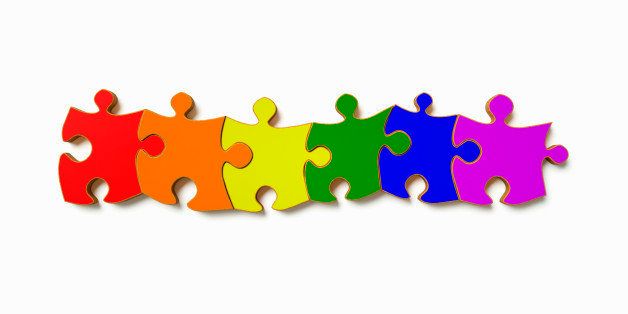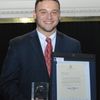
At 5:30 am, Brian Silver wakes up with his son Justin. Brian turns on the TV for Justin and unloads an impressive array of puzzles and toys, while administering Justin's required preventative medications. The rest of the morning is dedicated toward assisting Justin in getting dressed, encouraging him to eat breakfast and preparing him for school, all while attempting to alleviate any anxieties these activities might produce. An anxiety-induced seizure during this routine is commonplace. After Justin attends a school that specializes in special needs children, his mother, Shari, tries to infuse learning into his play, but is often met with resistance. Going bowling or to the beach are comforting activities, but the transition to and from these places can exacerbate Justin's stress levels, thus triggering another seizure. Up until recently, this was a typical day in the life of the Silver household. Stress-induced seizures were expected, but never was anyone fully prepared -- physically, or emotionally -- for the toll they placed.
In 2006, at the age of five, Justin was diagnosed with Fragile-X syndrome, the most common genetic cause of autism caused by a deficient production of the FMR1 protein in a gene on the X chromosome. Those with Fragile-X exhibit intellectual disabilities, attention disorders, autistic behaviors, and social/communication debilities. Justin's childhood has been riddled with trips to doctors as well as trial medications with unexpected side effects and results. One of Justin's primary struggles is transitioning from one activity to another, which exacerbates his anxiety and results in seizures. Going from his house to school is more than just a car ride; it is going from one "world" to another.
During nearly 12 years of friendship with Justin, I witnessed the toll these stress-induced seizures took on Justin's family. As a child, I participated in several fundraising events for Fragile-X organized by Justin's parents. Entering my junior year of high school, I wanted to begin my own initiative. To start, I assembled a team of three students who I knew would dedicate themselves to the project. I asked Justin's older sister, Hailey, who could offer invaluable insight into Justin's needs. Next, I recruited J.D. Gebbia, who has been a quasi-brother to Justin. Lastly, I encouraged my younger sister, Sarah, to join because of her ability to offer logical solutions. Our goal was simple: design a toy for children with Fragile-X that eases decision-making and anxiety when transitioning from one activity to another.
After meeting with Justin's parents, doctors, and clinical psychologists, we compiled a list of parameters for the game. I approached my technology teacher, Paul Rotstein, and presented our idea for the game. He assigned our project to his Advanced Design and Innovation Class in the form of a client profile. After combining the class's two proposed solutions and adding our own input, we finalized the ultimate design of The Magic Arrows.
The game performs twin functions. One function allows a child to follow the course of a typical day or a particular activity that is illustrated on interchangeable discs. The routine is divided into eight steps, which allows users to mark the completion of each step by placing a colored peg next to that task. The second function provides two whiteboard circles labeled "Activity" and "Reward" with a spinning arrow in the center of each circle. The purpose of these circles - which can list positive reinforcements such as snacks or activities (e.g., calling a relative or watching a movie) - is to subtly encourage users to move from one step to another before their anxiety kicks in. In effect, the user spins the "magic arrows" to unconsciously choose the motivation for completing one or more of any 8-step process.
Through donations from a close friend, the middle school Technology Class constructed 20 prototypes in their class, and the project expanded throughout the community. A friend filed a patent application pro bono with the U.S. Patent Office and the conference planner for the National Fragile X Foundation (NFXF) provided us with a free booth at their conference in Anaheim, California in July 2014.
We attended the conference alongside more than 900 parents, doctors, researchers and children with Fragile-X. After presenting the history and impact of The Magic Arrows, I received an unexpected standing ovation. Parents asked to buy our prototypes. Researchers from the University of California-Davis M.I.N.D. Institute -- the premier clinic for neurodevelopmental research for Fragile-X -- borrowed prototypes for further cognitive studies. The European Fragile-X Network cited our project on their website for its accomplishments, and the NFXF devoted a website page to our efforts. The experience was incredible.
Last year, I was accepted to my dream school, Duke University, where I will continue my education and involvement in the Fragile-X community. During the college search process, I learned of the Helen Diller Family Foundation's Diller Teen Tikkun Olam Award, a prestigious award devoted toward recognizing Jewish teens with community endeavors; applications and nominations are now open for next year's awards! Needless to say, being selected as a 2015 recipient for this award was an honor. To be considered amongst others as someone who can change the world for the better, and connecting our religious faith in the form of mitzvah to the world as a whole has been humbling.
Today, The Magic Arrows continues to grow. Currently, Sarah is working with a software engineering company to design an iPhone/iPad app for the game for convenience. She anticipates presenting the app at the 2016 NFXF Conference in San Antonio, Texas. If the game is commercially successful, all proceeds will be donated to the Fly With Me Fund, a charity Justin's parents founded to help Fragile-X Families afford the costs associated with Fragile X.
Our project started with one boy. That one boy inspired others to make a difference. My hometown of Lynbrook fostered the growth of the project, and the Helen Diller Family Foundation has facilitated its growth on a national level. Hopefully, the game will continue to grow and change as many lives as possible.
